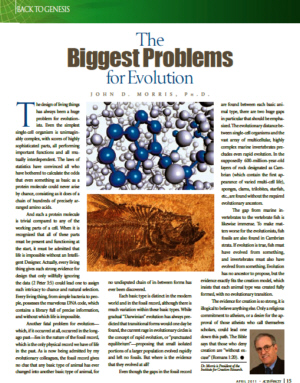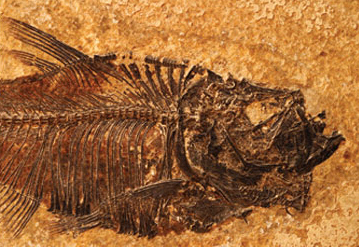Institute for Creation Research President Dr. John Morris has taken to recycling; in this case he’s dusted off some nonsense from an article he wrote 3 years ago titled “Evolution’s Biggest Hurdles” (Morris 2008) and repackaged it as “The Biggest Problems for Evolution” (Morris 2011).
As I usually do I started out writing a point by point re-rebuttal to Morris’s new article; even though I already wrote a fairly extensive rebuttal to the earlier version. However, as I was writing, and as it got longer and longer, I realized that I was going to bury the lead way too deep. So, I am dropping most of the rehashing and jump to the new issues I want to address.
First though just a little of the lead in for context:
Morris: Even though the gaps in the fossil record are found between each basic animal type, there are two huge gaps in particular that should be emphasized. The evolutionary distance between single-cell organisms and the vast array of multicellular, highly complex marine invertebrates precludes even rapid evolution.
Oh boy, this is déjà vu all over again.
From earlier context (see below) the “rapid evolution” he is referring to here is supposed to be punctuated equilibrium, however P.E. about apparent, geologically, “rapid” transitions (say a few tens of thousands of years) and concerns species level transitions (like those necessary to evolve horses and zebras from a common ancestor) not multicellular organisms from unicellular ones. Again, I’ll have more on his use of P.E. below.
As for the gap between unicellular and multicellular organisms the (really) short answer is: choanoflagellates (colony forming single celled organisms that are strikingly similar to cells found in sponges called choanocytes). Again, see my earlier post “You can tune a piano but you can’t tunicate” for more.
Morris: In the supposedly 600-million-year-old layers of rock designated as Cambrian (which contain the first appearance of varied multi-cell life), sponges, clams, trilobites, starfish, etc., are found without the required evolutionary ancestors.
Wrong, wrong, wrong. I covered this before as well.
1) There are fossils of multicellular organism in Precambrian strata (the Ediacaran biota for example).
2) Amongst those Precambrian multicellular organisms are sponges and jellyfish.
3) “Clams” (bivalve mollusks) are known from the Cambrian but only from few tiny extinct types.
4) Starfish or sea stars (Class Asteroidea) fossils do not appear in the fossil record until the Ordovician.
Morris: The gap from marine invertebrates to the vertebrate fish is likewise immense.
Again, Dr. Morris doesn’t want you to know about invertebrate chordates or the evidence for a relationship between chordates and echinoderms. I’ll have more on this in a few moments.
OK, now we get to it:
Morris: To make matters worse for the evolutionists, fish fossils are also found in Cambrian strata.
If we define the colloquial term “fish” in the usual way (in reference to all aquatic, gill bearing, vertebrates) then yes, a few genera of “fish fossils” have indeed been found in Cambrian strata.
However the word “fish”, is not a scientific term, so the question must be; exactly what sort of “fish” has been found in the Cambrian strata? Dr. Morris does not grace his readers with any further comment on this question; there is however a prominent illustration of a fossil fish that accompanies the article. Here is a screen shot of the page the article appears on:
 And here is a larger version of the fish fossil picture:
And here is a larger version of the fish fossil picture:
I think it is fair to say that most people who are not particularly familiar with vertebrate phylogeny and paleontology—including most of Dr. Morris’s readers—might assume when they read in his article that “fish fossils are also found in Cambrian strata” that the large centrally displayed picture of a fossil fish might in fact be one of the Cambrian fish Morris is referring to.



